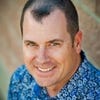Business Operations
More Topics
fireworks
Business Operations
Positive Predictions for 2025 (Part 2)Positive Predictions for 2025 (Part 2)
Event pros forecast what's on the horizon for the industry
Subscribe and receive the latest insights & essential content in the special events industry.
Yes, it's completely free







.jpg?width=100&auto=webp&quality=80&disable=upscale)



































